Interface Friction of Double-Walled Carbon Nanotubes Investigated Using Molecular Dynamics †
Abstract
:1. Introduction
2. Methodology
3. Results and Discussion
3.1. Effect of DWCNT Type
3.2. Effect of Outer Shell Diameter
3.3. Effect of Temperature
4. Conclusions
Acknowledgments
Author Contributions
Conflicts of Interest
References
- O’Connell, M.J. Carbon Nanotubes: Properties and Applications; CRC Press: Bocaraton, FL, USA, 2006. [Google Scholar]
- Servantie, J.; Gaspard, P. Rotational dynamics and friction in double-walled carbon nanotubes. Phys. Rev. Lett. 2006, 97, 186106. [Google Scholar] [CrossRef] [PubMed]
- Qin, Z.; Qin, Q.H.; Feng, X.Q. Mechanical property of carbon nanotubes with intramolecular junctions: Molecular dynamics simulations. Phys. Lett. A 2008, 372, 6661–6666. [Google Scholar] [CrossRef]
- Qiu, W.; Kang, Y.L.; Lei, Z.K.; Qin, Q.H.; Li, Q. A new theoretical model of a carbon nanotube strain sensor. Chin. Phys. Lett. 2009, 26, 080701. [Google Scholar]
- Rahimi, M.; Babu, D.J.; Singh, J.K.; Yang, Y.B.; Schneider, J.J.; Plathe, F.M. Double-walled carbon nanotube array for CO2 and SO2 adsorption. J. Chem. Phys. 2015, 143, 124701. [Google Scholar] [CrossRef] [PubMed]
- Zhang, R.; Ning, Z.; Xu, Z.; Zhang, Y.; Xie, H.; Ding, F.; Chen, Q.; Zhang, Q.; Qian, W.; Cui, Y.; et al. Interwall friction and sliding behavior of centimeters long double-walled carbon nanotubes. Nano Lett. 2016, 16, 1367–1374. [Google Scholar] [CrossRef] [PubMed]
- Zhang, R.; Ning, Z.; Zhang, Y.; Zheng, Q.; Chen, Q.; Xie, H.; Zhang, Q.; Qian, W.; Wei, F. Superlubricity in centimetres-long double-walled carbon nanotubes under ambient conditions. Nat. Nanotechnol. 2013, 8, 912–916. [Google Scholar] [CrossRef] [PubMed]
- Cumings, J.; Zettl, A. Low friction nanoscale linear bearing realized from multiwall carbon nanotubes. Science 2000, 289, 602–604. [Google Scholar] [CrossRef] [PubMed]
- Akita, S.; Nakayama, Y. Extraction of inner shell from multiwall carbon nanotubes for scanning probe microscope tip. Jpn. J. Appl. Phys. 2003, 42, 3933–3936. [Google Scholar] [CrossRef]
- Wu, C.D.; Fang, T.H.; Wei, H.J. Analysis of welding Au nanowires into T junctions. Mol. Simul. 2016, 42, 1029–1034. [Google Scholar] [CrossRef]
- Wu, C.D.; Fang, T.H.; Wu, C.C. Size effect on cold-welding of gold nanowires investigated using molecular dynamics simulations. Appl. Phys. A 2016, 122, 218. [Google Scholar] [CrossRef]
- Wu, C.D. Atomistic simulation of nanoformed metallic glass. Appl. Surf. Sci. 2015, 343, 153–159. [Google Scholar] [CrossRef]
- Liu, B.H.; Hsu, Q.C.; Wu, C.D. Nanoextruded NbTi superconductor nanowires investigated using molecular dynamics simulations. Appl. Phys. A 2016, 122, 465. [Google Scholar] [CrossRef]
- Wu, C.D. Molecular dynamics simulation of nanotribology properties of CuZr metallic glasses. Appl. Phys. A 2016, 122, 486. [Google Scholar] [CrossRef]
- Li, Y.; Hu, N.; Yamamoto, G.; Wang, Z.; Hashida, T.; Asanuma, H.; Dong, C.; Okabe, T.; Arai, M.; Fukunaga, H. Molecular mechanics simulation of the sliding behavior between nested walls in a multi-walled carbon nanotube. Carbon 2010, 48, 2934–2940. [Google Scholar] [CrossRef]
- Xia, Z.; Curtin, W.A. Pullout forces and friction in multiwall carbon nanotubes. Phys. Rev. B 2004, 69, 233408. [Google Scholar] [CrossRef]
- Song, H.Y.; Zha, X.W. Molecular dynamics study of effects of intertube spacing on sliding behaviors of multi-walled carbon nanotube. Comput. Mater. Sci. 2011, 50, 971–974. [Google Scholar] [CrossRef]
- Tersoff, J. New empirical model for the structural properties of silicon. Phys. Rev. Lett. 1986, 56, 632–635. [Google Scholar] [CrossRef] [PubMed]
- Tsai, P.C.; Fang, T.H. A molecular dynamics study of the nucleation, thermal stability and nanomechanics ofcarbon nanocones. Nanotechnology 2007, 18, 105702. [Google Scholar] [CrossRef]
- Li, Q.Y.; Kim, K.S. Micromechanics of friction: Effects of nanometre-scale roughness. Proc. R. Soc. A 2008, 464, 1319–1343. [Google Scholar] [CrossRef]
- Liu, Z.; Yang, J.; Grey, F.; Liu, J.Z.; Liu, Y.; Wang, Y.; Yang, Y.; Cheng, Y.; Zheng, Q. Observation of microscale superlubricity in graphite. Phys. Rev. Lett. 2012, 108, 205503. [Google Scholar] [CrossRef] [PubMed]
- Erdemir, A.; Martin, J.M. Superlubricity; Elsevier: Amsterdam, The Netherlands, 2007. [Google Scholar]
- Szlufarska, I.; Chandross, M.; Carpick, R.W. Recent advances in single-asperity nanotribology. J. Phys. D 2008, 41, 123001. [Google Scholar] [CrossRef]
- Vanossi, A.; Manini, N.; Urbakh, M.; Zapperi, S.; Tosatti, E. Modeling friction: From nano to meso scales. Rev. Mod. Phys. 2013, 85, 529. [Google Scholar] [CrossRef]
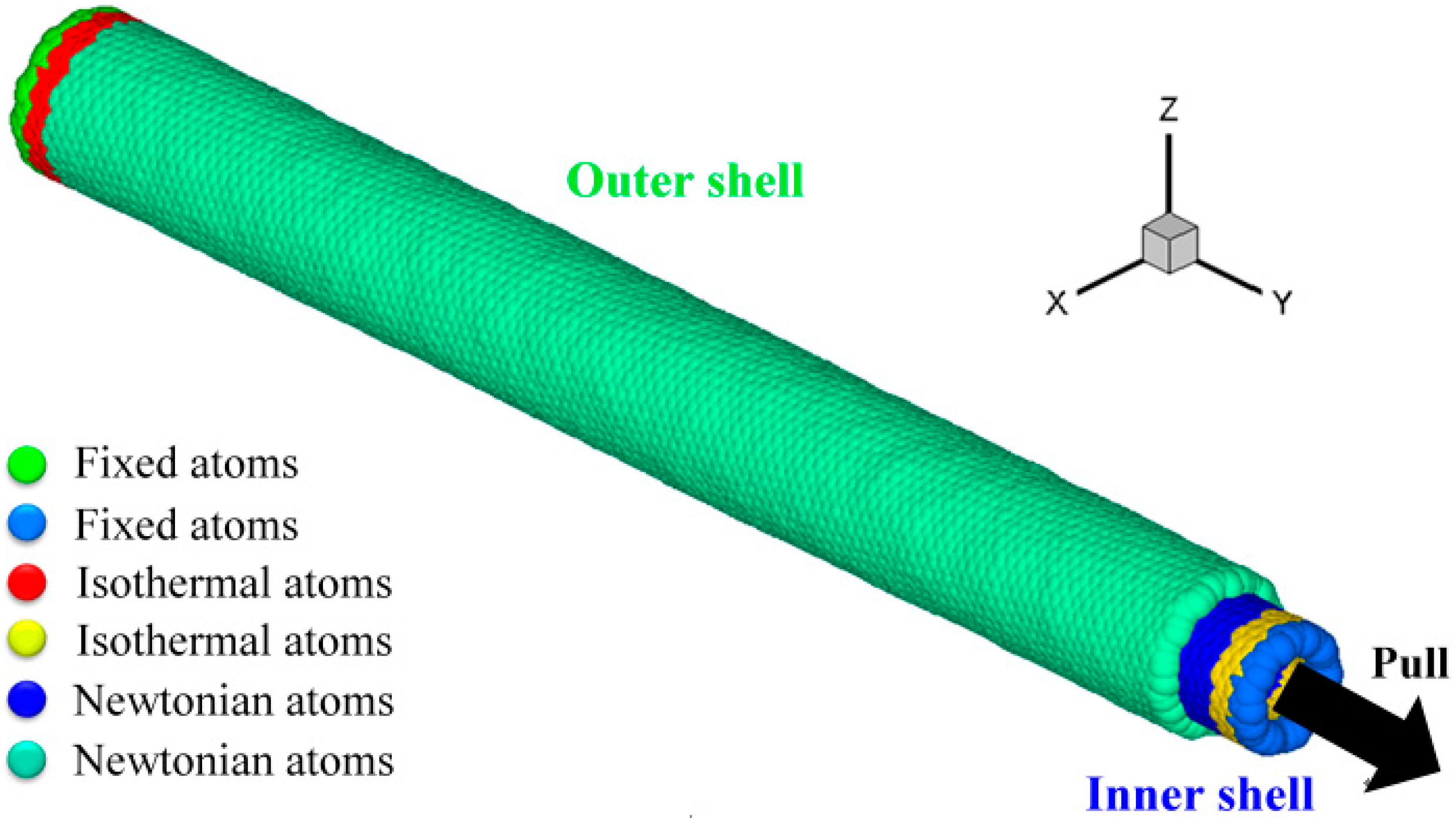
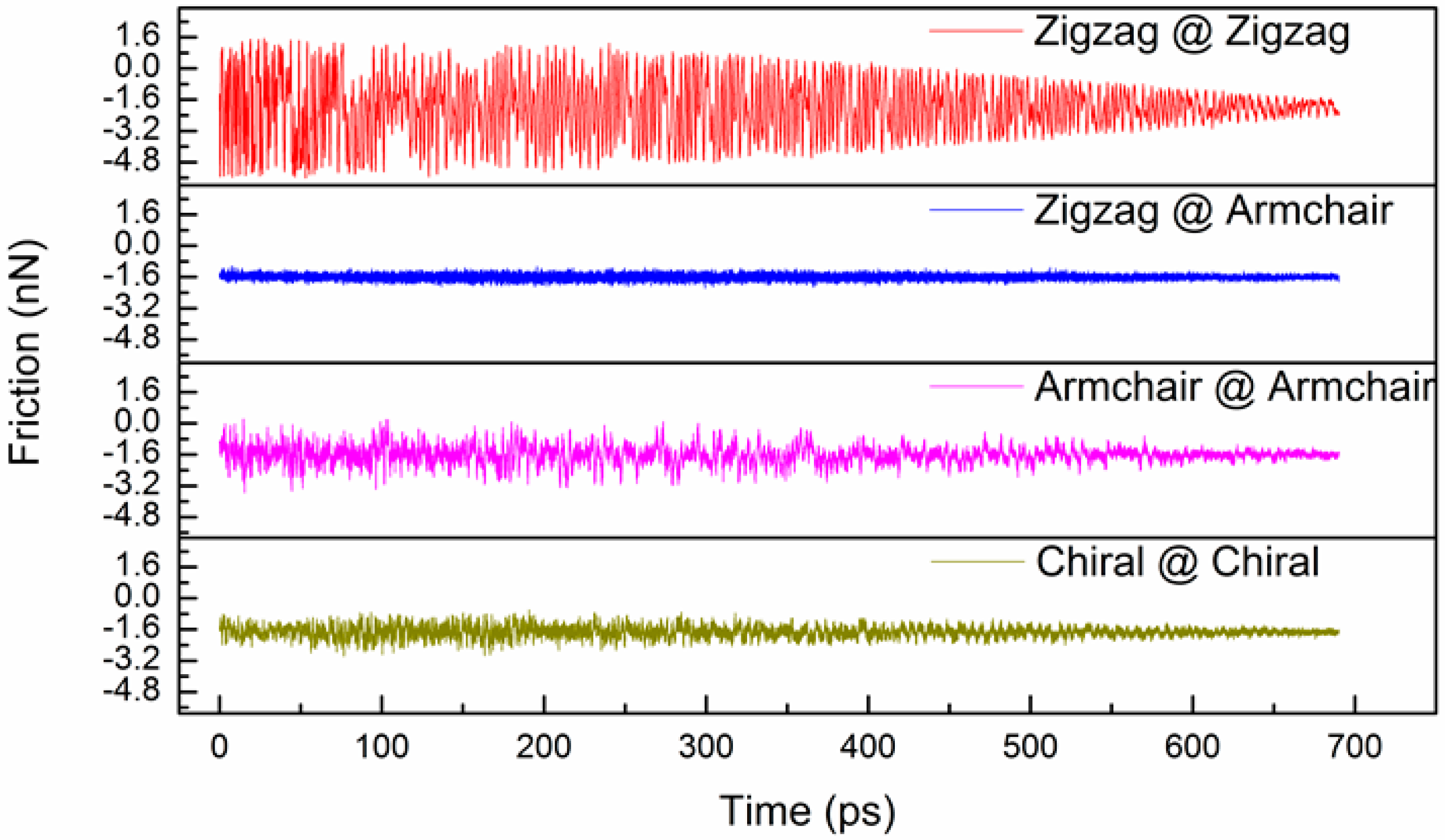
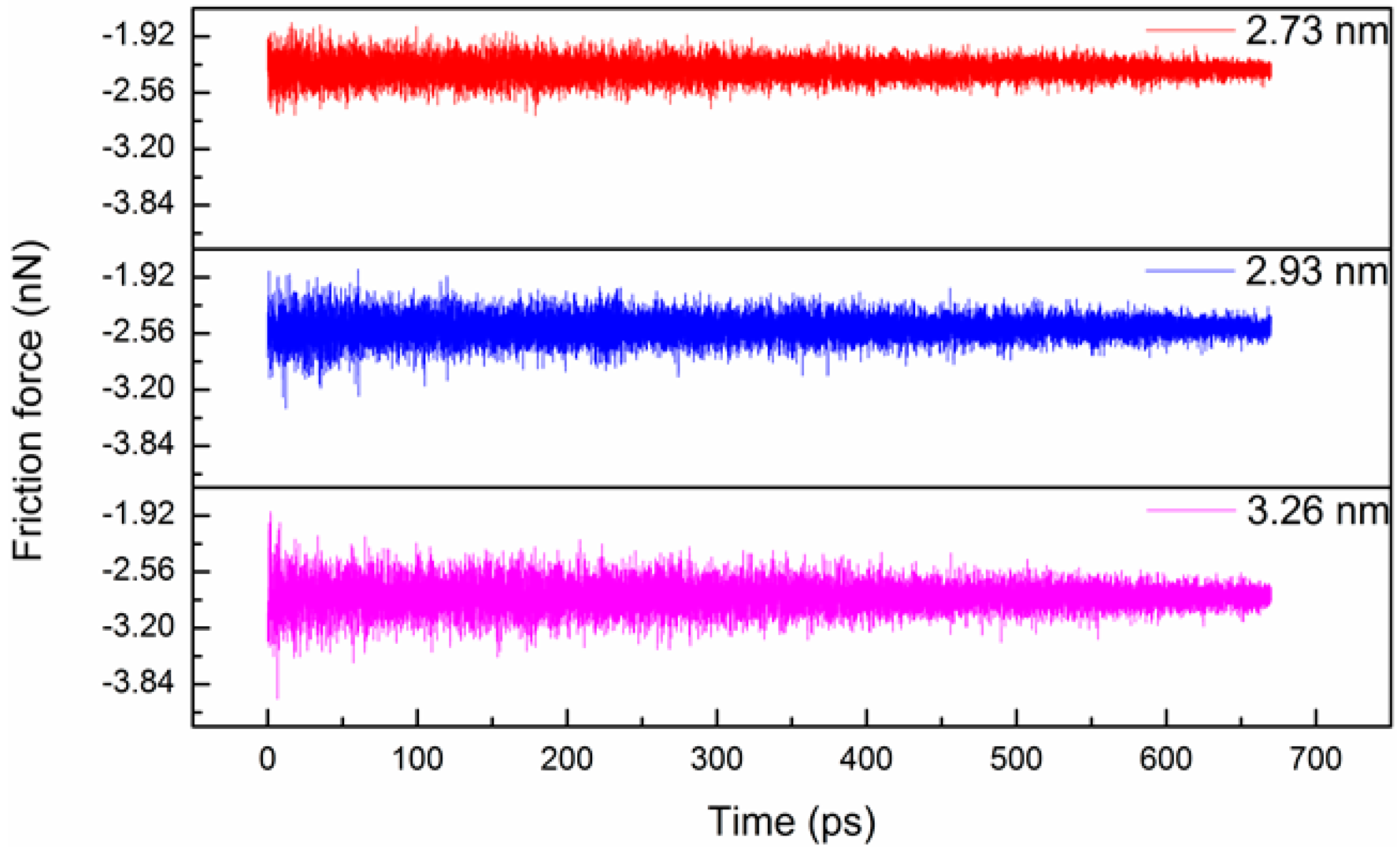


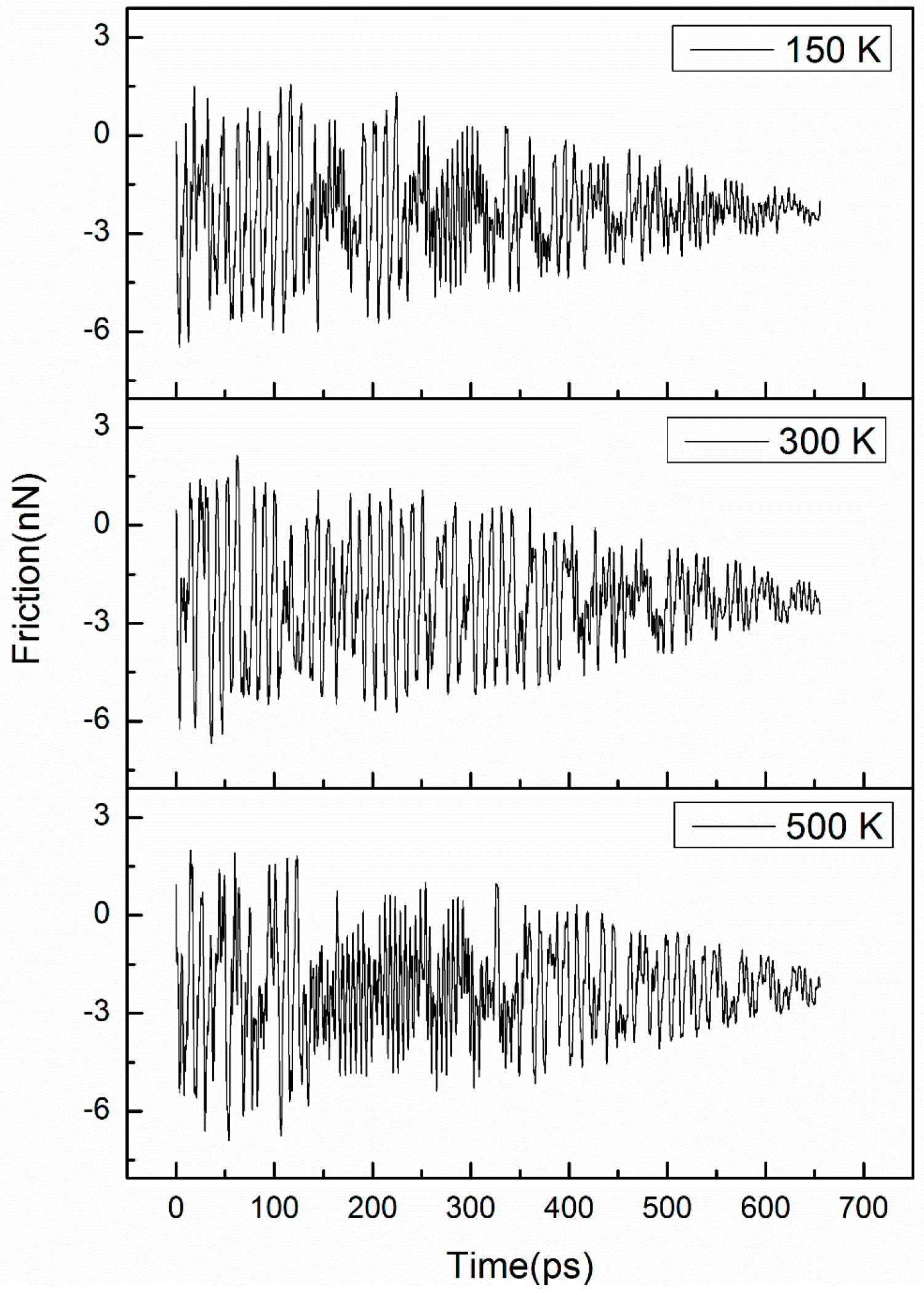
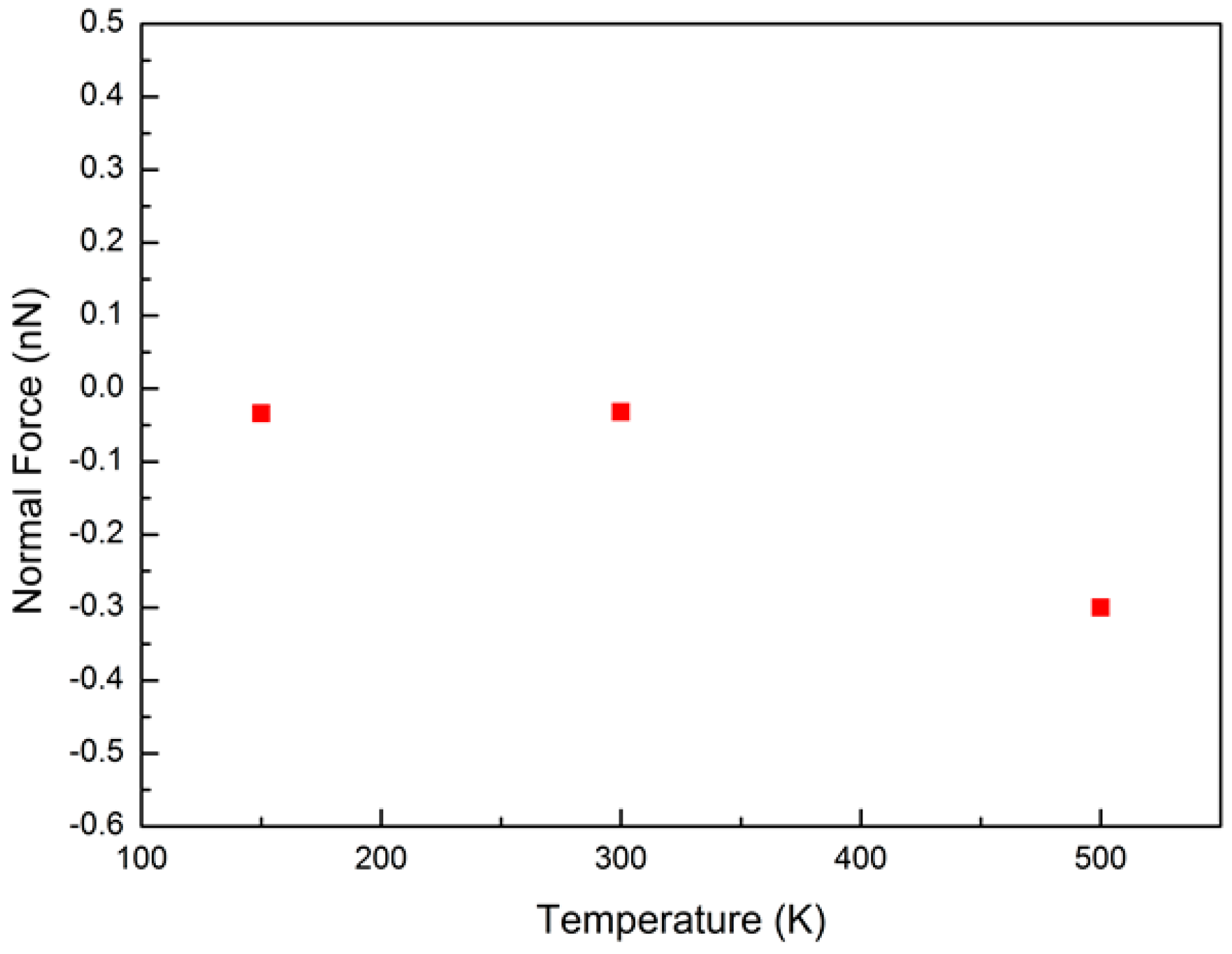
© 2017 by the authors. Licensee MDPI, Basel, Switzerland. This article is an open access article distributed under the terms and conditions of the Creative Commons Attribution (CC BY) license ( http://creativecommons.org/licenses/by/4.0/).
Share and Cite
Wu, C.-D.; Fang, T.-H.; Tung, F.-Y. Interface Friction of Double-Walled Carbon Nanotubes Investigated Using Molecular Dynamics †. Micromachines 2017, 8, 84. https://doi.org/10.3390/mi8030084
Wu C-D, Fang T-H, Tung F-Y. Interface Friction of Double-Walled Carbon Nanotubes Investigated Using Molecular Dynamics †. Micromachines. 2017; 8(3):84. https://doi.org/10.3390/mi8030084
Chicago/Turabian StyleWu, Cheng-Da, Te-Hua Fang, and Fu-Yung Tung. 2017. "Interface Friction of Double-Walled Carbon Nanotubes Investigated Using Molecular Dynamics †" Micromachines 8, no. 3: 84. https://doi.org/10.3390/mi8030084





